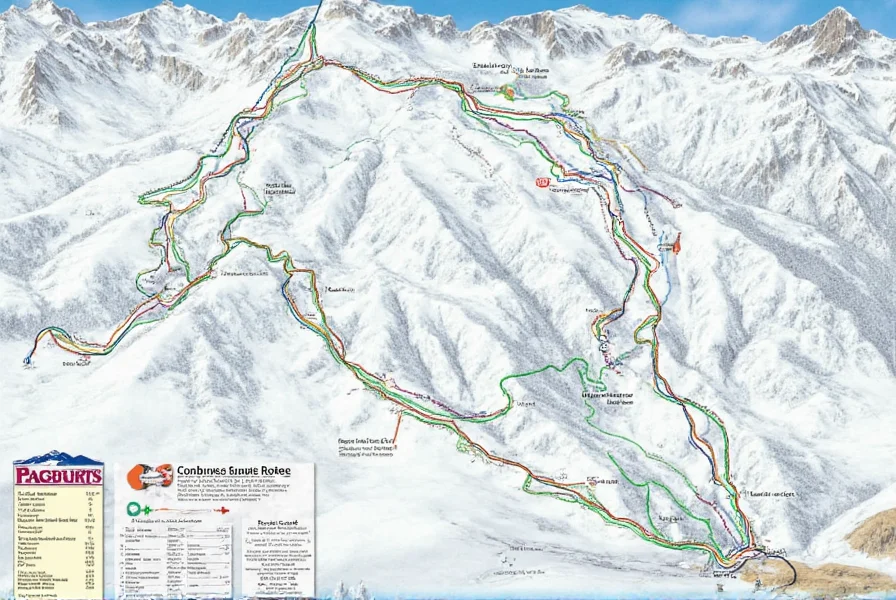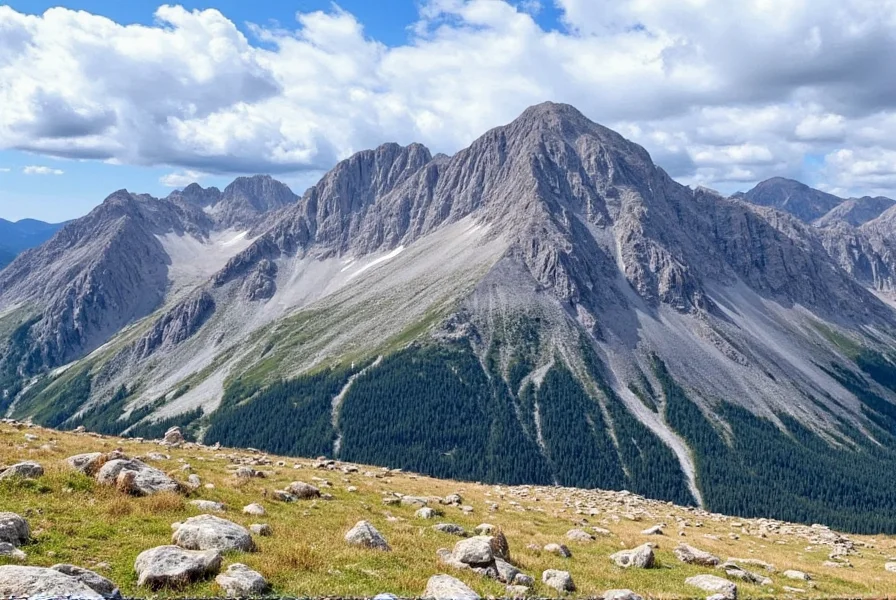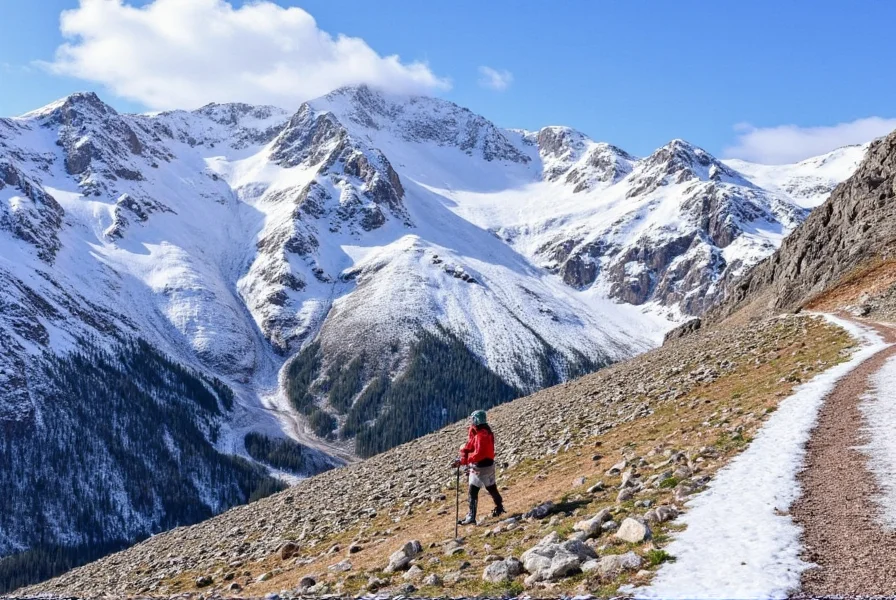Cinnamon Pass represents one of Colorado's most spectacular high-alpine routes, traversing the rugged San Juan Mountains with breathtaking vistas at every turn. This historic mining road, originally constructed in the late 19th century, now serves as a premier destination for off-road enthusiasts, photographers, and hikers seeking authentic mountain experiences away from crowded tourist spots. The pass connects the charming historic towns of Lake City and Silverton, crossing the Continental Divide through some of the most dramatic terrain in the Rocky Mountains.
Navigating Cinnamon Pass requires careful preparation and appropriate vehicle selection. The 14-mile route features steep grades up to 15%, narrow sections with significant drop-offs, and rocky terrain that demands high-clearance 4x4 vehicles. Summer thunderstorms can quickly transform the road into a slippery hazard, while altitude sickness affects many unprepared visitors due to the extreme elevation. Understanding these challenges before attempting the journey ensures both safety and enjoyment of this remarkable Colorado treasure.
Geographical Significance and Location Details
Situated within the Uncompahgre National Forest and San Juan Mountains, Cinnamon Pass forms part of the Alpine Loop National Back Country Byway, a 65-mile network of historic mining roads. The pass serves as a critical connection between Hinsdale County and San Juan County, traversing the western edge of the La Garita Wilderness. Its name derives from the distinctive cinnamon-colored rock formations visible along the route, particularly noticeable during sunrise and sunset when the light enhances the warm hues of the volcanic terrain.
| Attribute | Detail |
|---|---|
| Elevation | 12,640 feet (3,853 meters) |
| Location | San Juan Mountains, Colorado |
| Connects | Lake City and Silverton |
| Seasonal Access | July through September (varies annually) |
| Route Length | Approximately 14 miles |
| Recommended Vehicle | High-clearance 4x4 with low-range gearing |
Access Routes and Road Conditions
Two primary access points serve Cinnamon Pass, each offering distinct experiences and challenges. The Lake City approach begins at Engineer Pass Road (Forest Road 117), requiring approximately 45 minutes to reach the pass summit from town. This western approach features dramatic views of the Cimarron Ridge and numerous pullouts for photography. The Silverton approach starts near the ghost town of Animas Forks, following Engineer Pass Road (Forest Road 210) with steeper initial grades and narrower sections.
Current road conditions for Cinnamon Pass vary significantly throughout the short summer season. Early season (July) typically features muddy sections and potential snow patches, while late season (September) brings increased rock exposure and dust. Recent years have seen improved maintenance due to increased visitation, but the road remains primitive with no guardrails and numerous steep drop-offs. Checking with the Lake City or Silverton visitor centers for current conditions before departure proves essential for a safe journey.

Optimal Timing for Your Visit
Understanding Cinnamon Pass weather patterns significantly enhances your experience. The narrow window of accessibility—typically late June through September—requires careful timing based on your interests. July offers the most reliable road conditions but coincides with peak wildflower displays and afternoon thunderstorms. August provides more stable weather but increased visitor traffic. September delivers crisp air, dramatic fall colors in the aspen groves, and fewer crowds, though early snowstorms can prematurely close the pass.
For photographers seeking the best Cinnamon Pass photography locations, early morning light illuminates the eastern slopes while late afternoon highlights the western exposures. The golden hour around sunrise and sunset transforms the cinnamon-colored rocks into glowing masterpieces. Wildflower enthusiasts should target mid-July when alpine blooms peak, while fall color seekers find optimal conditions during the third week of September when aspens reach their vibrant peak.
Safety Considerations and Essential Preparation
Visiting Cinnamon Pass demands serious attention to safety precautions due to its remote location and extreme conditions. Altitude sickness affects approximately 25% of visitors ascending above 12,000 feet without proper acclimatization. Symptoms including headache, nausea, and dizziness can develop rapidly, making gradual ascent and hydration critical. Carrying supplemental oxygen remains advisable for those particularly sensitive to high elevations.
Vehicle preparation proves equally important for Cinnamon Pass 4x4 route safety. Essential equipment includes:
- Full-size spare tire and tire repair kit
- Traction boards for recovery
- Recovery straps and shackles
- Comprehensive first-aid kit
- Emergency communication device (satellite messenger)
- Extra food, water, and warm clothing
Many visitors underestimate the Cinnamon Pass elevation challenges, attempting the route in unsuitable vehicles or without proper preparation. The nearest services exist in Lake City or Silverton, both approximately 45 minutes from the pass summit, making self-sufficiency essential for a safe experience.

Nearby Attractions and Extended Itineraries
Cinnamon Pass serves as a gateway to numerous additional attractions within the Alpine Loop system. The historic mining town of Animas Forks, located just 2 miles from the pass summit, offers well-preserved 19th-century structures and interpretive signage detailing Colorado's mining heritage. Engineer Pass, located 6 miles east of Cinnamon Pass, provides an alternative high-elevation experience with different geological formations.
For those extending their journey, combining Cinnamon Pass with other Alpine Loop destinations creates a comprehensive San Juan Mountains experience. The full loop connecting Lake City, Engineer Pass, Cinnamon Pass, and Silverton typically requires 6-8 hours to complete, allowing time for exploration at each location. Many visitors incorporate this route into longer Colorado mountain adventures, pairing it with visits to Ouray's hot springs, Telluride's historic district, or the scenic Million Dollar Highway.
Environmental Stewardship and Responsible Visitation
As visitation to Cinnamon Pass increases, practicing Leave No Trace principles becomes increasingly important. The fragile alpine ecosystem suffers quickly from careless behavior, with plant recovery taking decades in these high-elevation environments. Visitors should remain on established roads and trails, pack out all waste, and avoid disturbing wildlife. The presence of rare plant species and sensitive habitats necessitates careful movement through the area.
Recent years have seen increased enforcement of regulations regarding off-road vehicle use beyond established routes. Violators face significant fines under Forest Service regulations designed to protect these pristine environments. Respecting seasonal closures and designated camping areas ensures continued access for future visitors while preserving the natural beauty that makes Cinnamon Pass so special.
Frequently Asked Questions About Cinnamon Pass
Can I drive Cinnamon Pass in a regular SUV or car?
No, Cinnamon Pass requires a high-clearance 4x4 vehicle with low-range gearing. The road features steep sections up to 15% grade, large rocks, and narrow passages with significant drop-offs. Regular SUVs and cars lack the necessary clearance and traction control for safe passage. Many visitors have damaged vehicles attempting this route without proper equipment.
What's the best time of year to see wildflowers on Cinnamon Pass?
Mid-July typically offers the most spectacular wildflower displays along Cinnamon Pass. The alpine wildflower season peaks during this period when temperatures remain moderate and moisture from spring snowmelt sustains the blooms. Popular species include alpine forget-me-nots, skyrockets, and various columbines. Early July may still have lingering snow patches, while late July often sees reduced blooms due to summer heat.
How long does it take to drive Cinnamon Pass?
Allow 2-3 hours to drive the 14-mile route across Cinnamon Pass, not including stops. Most visitors spend 4-6 hours total when accounting for photography stops, short hikes, and exploration of nearby attractions like Animas Forks. The narrow, rocky road requires slow, careful driving, and many visitors choose to stop at multiple viewpoints to enjoy the scenery and acclimate to the elevation.
Are there camping options near Cinnamon Pass?
Designated camping exists at Engineer Pass Campground (6 miles east of Cinnamon Pass) and Lake City's public lands. Dispersed camping follows strict regulations—campers must stay 200 feet from roads and water sources, and no camping is permitted within 100 feet of the pass summit. The area operates under a quota system during peak season, so checking with the Lake City Ranger District for current regulations and availability is essential before planning your trip.
What should I do if my vehicle gets stuck on Cinnamon Pass?
If your vehicle becomes stuck on Cinnamon Pass, remain with your vehicle and use a satellite communication device to call for assistance. Cell service is unreliable in this remote area. Carry recovery equipment including traction boards, straps, and a shovel. Never attempt to push a stuck vehicle down slopes or cliffs. The nearest Forest Service ranger stations are in Lake City and Silverton, both approximately 45 minutes from the pass summit. Prevention through proper vehicle preparation and driving technique remains the best strategy.











 浙公网安备
33010002000092号
浙公网安备
33010002000092号 浙B2-20120091-4
浙B2-20120091-4